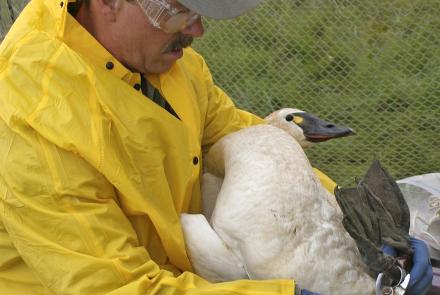Indigo and Blue Genes
"Mommy, why are blue jeans blue?" Kids are like that; they'll ask wonderful but obvious questions that grown-ups never consider. "I don't know who decided they should be blue or why they decided that way," I replied to that question my now-grown daughter asked many years ago, "but I know what makes them blue. It's a dye called indigo, and it comes from a plant related to peas and beans." We got off into a discussion of indigo plantations and natural dyes, ending up with the blueberry stains on her old shirt. Parents are like that; they sidestep tough questions, turning them into something they can answer.
Unfortunately, they can come up with wrong answers. My information was outdated. It's true enough that the dye used to color blue jeans is indigo, but it's been many decades since its source has been what the "a plant that yields indigo, esp. any of the genus (Indigofera) of leguminous herbs."
Near the turn of the century German chemists found a way to synthesize the molecule responsible for indigo's color. They were able to crank out quantities of blue powder with all the properties of the natural material but costing far less. The labor-intensive indigo plantations soon went out of business.
The synthesis of indigo was one of the early successes of industrial chemistry, which soon found replacements for natural sources of other dyes, pharmaceuticals, and even flavorings. But while synthetic substances saved money and permitted great progress, sometimes they had other costs. The process by which indigo is synthesized, for example, involves some very nasty ingredients. Sodium cyanide and formaldehyde---a poison and a carcinogen---are among them.
Such substances are environmentally risky. Even with the regulations and corporate caution covering the handling of hazardous materials, it's enough to make one question the wisdom of buying and wearing blue denim. However, the same issue of Science magazine that told me I'd once misinformed my daughter had some good news to balance the bad. The blue in blue jeans can be produced by other growing things.
In 1983, researchers were studying a species of bacteria that breaks down hydrocarbons. They picked out a gene that enabled the organism to code for an enzyme, napthalene dioxygenase, useful in that breakdown. Then they inserted the gene into the common intestine-dwelling Escherichia coli, humankind's most faithful companion and probably the best-known kind of bacteria. The idea was to probe the gene's activity in this better-understood microorganism.
The research team found something unexpected. The altered E. coli turned a common amino acid, tryptophan, into indigo.
Presently a team of genetic engineers at Genencor International, a biotech firm in New York state, are working with colonies of altered bacteria to perfect the process. They are tinkering with acidity, temperature, and tryptophan supply, aiming for an efficiency and cost of producing indigo competitive with the old industrial-chemistry process. Ironically, one challenge is to set conditions so that the bacteria can do their work without producing poisonous by-products. In this case, the metabolic wastes aren't so hazardous to the environment. Instead, they first kill the hard-working bacteria.
The research team members are confident they can overcome the difficulties, and foresee a time when vats of engineered bacteria replace chemical synthesis just as chemistry once replaced natural products.
I hope they succeed, and soon. I'm looking forward to the next time a child asks me about blue jeans. "I know what makes them blue," I'll say. "It's a dye called indigo, and it comes from bacteria that are very like the ones that help you digest your food."




